Infertility surgery
Problems with fertility have become an increasing problem in the late 20th and early 21st century. Everybody knows someone affected by infertility if not personally afflicted with the problem themselves. As a gynaecologist, Dr Reyftmann is involved in the preliminary work-up and investigation of couples with fertility issues.
Female factor infertility is responsible for more than 40% of fertility problems.
Causes of female factor infertility may include:
- Menstrual issues including premature menopause
- Problems with ovulation e.g. Polycystic ovarian disease
How can we help?
Laparoscopic or keyhole surgery is perfectly suited to the investigation and/or management of many of these problems.
For example, the most common surgical benefit of laparoscopy is in the diagnosis and removal of
endometriosis. Endometriosis itself releases chemicals that inhibit normal conception, whilst the pain caused by the deposits of endometriosis can make intercourse painful therefore inhibiting a normal sexual relationship. Furthermore, in severe cases endometriosis can cause scarring and anatomical alteration of the tubes and ovaries, which make conception impossible.
The magnified views given by laparoscopic equipment means that damage to delicate reproductive organs can be accurately addressed with a far lessened risk of
adhesions. Such damage and internal problems can include previous pelvic inflammatory disease. This may be silent yet continuing to cause blockage of the ends of the tubes.
 Right Hydrosalpynx (distal obstruction of the fallopian tube) operated with LASER
Right Hydrosalpynx (distal obstruction of the fallopian tube) operated with LASER
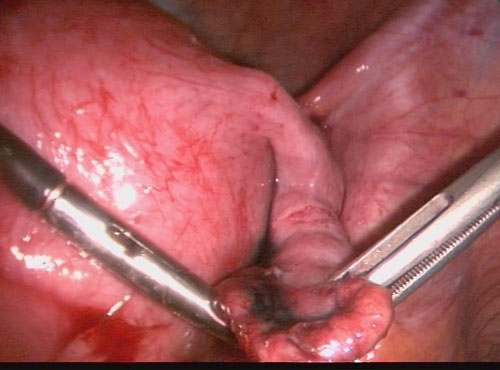 Final result after neosalpingostomy (the blue dye is visible through the patent tube)
Final result after neosalpingostomy (the blue dye is visible through the patent tube)
Similarly adhesions from a previous open surgery such as an appendicectomy may be obstructing the tubes and ovaries. Laparoscopy is perfectly suited to the treatment of any and all of these conditions.
Finally, laparoscopy can be used to perform a
tubal reanastomosis, that is, the rejoining of cut segments of the tubes. This will then restore fertility previously cancelled. This is applicable for women who have had previous tubal ligation for sterilisation.
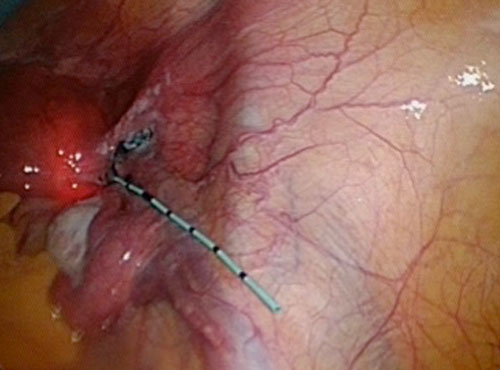 Catheterisation of the right tube before reanastomosis
Catheterisation of the right tube before reanastomosis
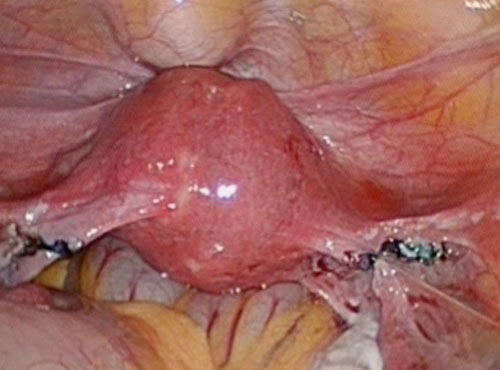 Reapproximation of the distal and proximal stumps, with the help of the catheter
Reapproximation of the distal and proximal stumps, with the help of the catheter
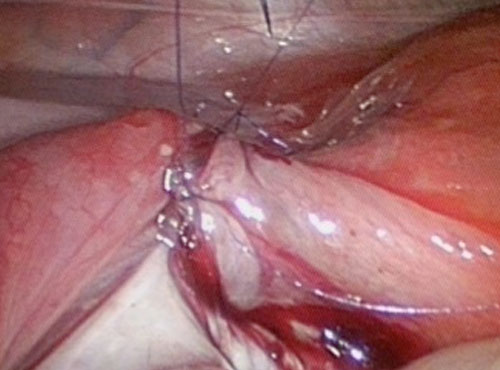 Laparoscopic sutures
Laparoscopic sutures
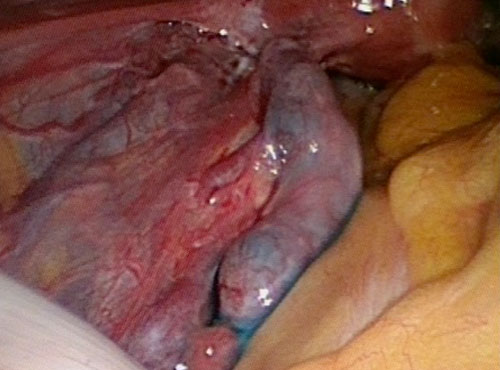 Final check after reanastomosis, the blue dye spills freely.
Final check after reanastomosis, the blue dye spills freely.
What do I do now?
A/Prof Reyftmann is an expert in laparoscopic reproductive surgery and is probably one of the most experienced in that field in the Illawarra. He would be happy to provide further information if desired. If you think these issues relate to you and you wish to organise a personal consultation please call
(02) 4227 6589 to make an appointment.





